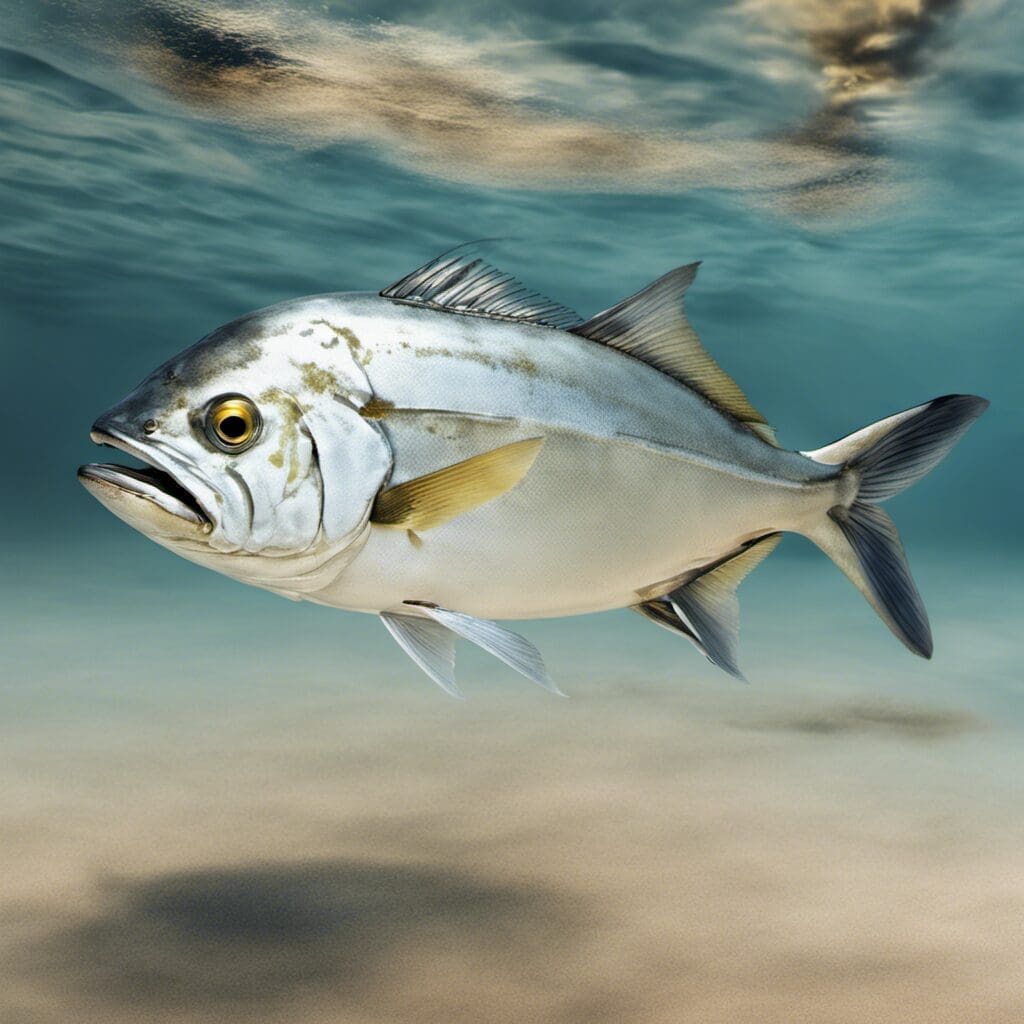Introduction
The Trevally (Golden) or Gnathanodon speciosus, is a tropical marine species belonging to the Jack family, Carangidae. Well known and valued among anglers and seafood lovers due to their strong fight on the line and excellent table qualities, these fishes play an important role in the local fisheries and aquaculture industries.
Conservation Status
The Golden Trevally is classified as ‘Least Concern’ according to the International Union for Conservation of Nature (IUCN). Local conservation efforts focus on responsible fishing and maintaining sustainable population levels through closely monitored quotas.
Statistics
| Statistic | Average | Range |
|---|---|---|
| Length | 60 cm | 50 – 120 cm |
| Weight | 4 kg | 2 - 15 kg |
| Average Lifespan | 10 Years | Not Specified |
Distribution
Golden Trevally are found in the warm tropical and subtropical waters of the Indian and Pacific Oceans from South Africa to Hawaii, Japan, Australia and New Zealand. Their migratory patterns are heavily influenced by temperature and food availability.
Habitats
The fish inhabit a wide variety of marine environments depending on their age and size. Juveniles are commonly found in coastal estuaries, mangroves, and brackish bays, while adults reside in lagoons, inshore reefs, and offshore islands. They primarily inhabit shallow waters with a depth range of 1 to 100 meters and temperature range of 20 to 28°C.
When and Where to See
The species is most observable during the spawning season, which varies from late spring to early fall. They are primarily active during daylight hours but have been known to feed at night in well-lit areas.
Best Fishing Locations
Top Fishing Spots
- Great Barrier Reef, Australia
- Hawaii, USA
- Andaman and Nicobar Islands, India
- Mauritius, Indian Ocean
- Florida Keys, USA
- Costa Rica, Pacific Ocean
- Maldive Islands, Indian Ocean
- Gulf of Thailand
- Red Sea, Egypt
- Biscayne Bay, USA
Fishing Tips
To find the species, anglers should focus on areas with abundant small baitfish and current flows. Reefs, lagoons, and estuaries are prime locations to find Golden Trevally.
How to Catch
Golden Trevally prefer a variety of baits including prawns, squid, crabs, and small fish. They respond well to surface lures, soft plastics, poppers, and fly fishing. Peak times for fishing are early morning and late afternoon, especially during the tide change.
Identification Guide
Golden Trevally are easy to identify thanks to their bright golden body, sleek, streamlined shape, and distinct black bands running across their eyes. They bear a resemblance to other trevallies but can be distinguished by their unique golden color and black eyestripes.
Culinary Use
How to Cook
The flesh of the Golden Trevally is firm and white, making it perfect for both grilling and frying. Due to its mild flavor, it pairs well with a variety of sauces and seasonings.
Taste Profile
Golden Trevally has a mild, buttery flavor with a delicate sweetness. It has low oiliness and moist, medium to firm flesh that holds together well when cooked, making it ideal for a variety of dishes.
Additional Information
Behavior
Golden Trevally are schooling fish, often seen in small groups. As juveniles, they follow larger animals such as sharks, gaining protection from predators. They are carnivorous, feeding primarily on small fish, crustaceans, and cephalopods.
Predators and Threats
Larger fish and sharks are the natural predators of Golden Trevally. Human-induced threats include overfishing and habitat destruction due to coastal development and pollution.
Cultural/ Historical Significance
For local communities, the Golden Trevally carries cultural significance. In many coastal and island cultures, the species is featured in folklore and myths, representing abundance and good luck.
References and Further Reading
Golden Trevally – Sea-Ex
Fishbase Summary – Gnathanodon speciosus
Florida Museum Species Profiles

